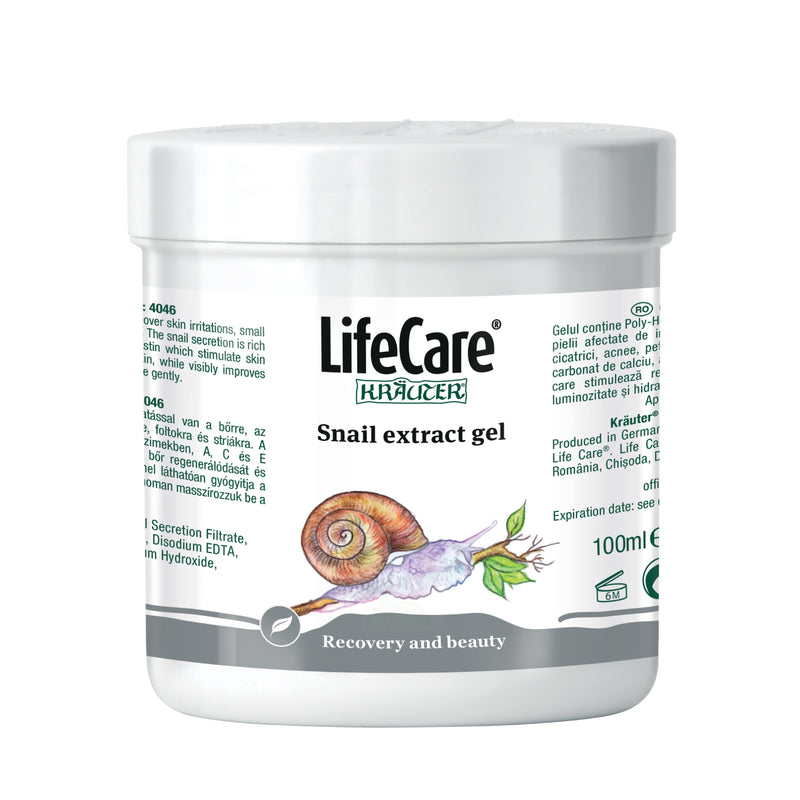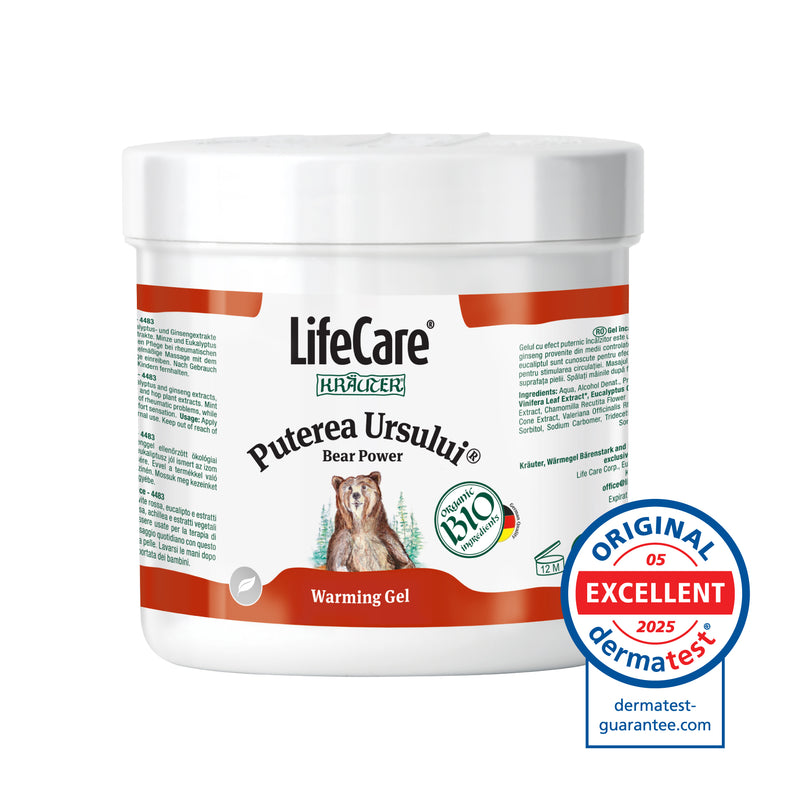Vitamin A is an essential nutrient for general health, which plays a crucial role in maintaining a healthy view, a strong immune system and a hydrated skin. Further discover the benefits of vitamin A, vitamin A sources, deficiency and excess symptoms, as well as daily intake recommendations. Also, what are the forms of vitamin A available and how to ensure an adequate intake.
What can you read in this article:
1. What is vitamin A?
2. The benefits of vitamin A
3. Studies on Vitamin A
4. How Vitamin A Deficiency manifests
5. Excess of vitamin A and interactions with other substances
6.. Needs and recommendations for different population groups
7. How to get vitamin A from diet
1. What is vitamin A?
Vitamin A. It is an essential nutrient that plays vital roles in the body, having two main forms: preformed vitamin (retinol and retinilic esters, forms that are found exclusively in animal products) and carotenoids (plants, algae and photosynthetic bacteria). These two forms differ in the chemical structure and the food sources in which you find them. Here are details about the two main categories and their subcategories:
Preformed vitamin A
Retinoids are vitamin A forms that are directly used by the body, found in animal products. They include:
- Retinol: It is the active form of vitamin A found in animal foods, such as liver, dairy products and eggs. Retinol is absorbed directly into the body and does not require additional conversion.
- retinal: it is the form of vitamin A that combines with opsine protein to form rodopsin, the pigment needed for night vision. It is found in the retina and is essential for vision.
- retinoic acid: it is the form of vitamin A that plays a crucial role in regulating genes and in cell differentiation. Retinoic acid is produced in the body in retinol and is important for the normal development and functioning of the skin and mucous membranes.
carotenoids
Carotenoids are plant pigments that are found in vegetables and fruits and can be converted into vitamin A in the body. The most important carotenoids that have provitamin activity includes:
- Beta-carotene: The most well-known and efficient precursor of vitamin A. It is found in carrots, pumpkin, sweet potatoes and other orange and yellow vegetables.
-alpha-carotene: it has a provitamin activity of less than beta-carotene, but it contributes to the intake of vitamin A. It is found in carrots, pumpkin and other vegetables.
- Lutein although it is not effectively converted into vitamin A, lutein is important for eye health and is found in vegetables with green leaf, such as spinach and kale.
- Zeaxantine: similar to lutein, zeaxanthin does not convert into vitamin A, but is important for eye protection. It is found in green vegetables, such as kale and spinach, and in corn.
- Lycopene: it is a carotenoid that does not convert into vitamin A, but has antioxidant effects. It is found in tomatoes and red products.
What do you need to know?
Retinoids are directly used by the body and are found in animal products, while carotenoids are precursors of vitamin A found in plants, which are converted into vitamin A as needed. Both forms are essential for general health, including vision, immune function and skin health.
Preformed vitamin A is absorbed directly into the small intestine and transported in the blood. It is stored in the liver and used as needed. Also, retinoic acid, produced from retinol, regulates the expression of genes and is important for cell development.
Carotenoids are converted into vitamin A into the small intestine, depending on the body's needs. This conversion is regulated by the status of vitamin A of the body and other dietary factors.
2. The benefits of vitamin A
Vitamin A is essential for various functions of the body. Here are some of its key benefits:
Improving vision
Vitamin A. It is crucial to eye health. Retinol is an important component of rhodopsin, the visual pigment in the retina that allows the optimization of vision under low light conditions. Vitamin A deficiency can lead to nighttime visible difficulties, known as "nocturnal blindness". Vitamin A contributes to the health of the retina and can help prevent macular degeneration related to age, a condition that can lead to loss of central vision.
Supporting the immune system
Vitamin A plays a crucial role in the functioning of the immune system, helping to maintain the integrity of mucous membranes and skin, which are the first line of defense against pathogens. It also helps to develop and functioning immune cells, such as T lymphocytes, which helps the body combat infections. Therefore, an adequate intake of vitamin A can reduce the risk of respiratory and gastrointestinal infections and support faster recovery in case of disease.
Maintaining healthy skin
Vitamin A is important for maintaining skin health. It contributes to cell regeneration and helps prevent skin drying and other dermatological conditions. Retinoids, such as tretinoin, are used in dermatological treatments, often used to treat acne. Vitamin A promotes cell regeneration and stimulates collagen production. Retinoids, such as tretinoin, are used in dermatological treatments for acne and other skin conditions.
Support for raising and developing in children
Vitamin A is essential for the normal development of the embryo and children. It is involved in the formation of organs and bone system and in the development of the central nervous system.
Adjusting genital and reproductive function
Vitamin A is important for the operation of the ovaries and can influence feminine fertility. It also plays a role in the development of sperm and maintaining the health of the male reproductive system.
3. Studies on Vitamin A
Vitamin A. It is a topic of great interest in the field of research, and recent studies continue to explore its multiple health roles. Read more about some relevant studies that have contributed to understanding the benefits of vitamin A:
Vitamin A and eye health
A study investigated the impact of vitamin A deficiency on macular degeneration. Research has shown that adequate levels of vitamin A can reduce the risk of disease progression and improve retina's health, emphasizing the importance of vitamin A to prevent eye diseases related to age.
Vitamin A and the immune system
Another study details how vitamin A influences the function of the immune system. Vitamin A is essential for the development and functioning of immune cells, such as T. Vitamin A deficiency has been associated with increased susceptibility to infections, and vitamin A supplementation can improve immune response in cases of deficiency.
Vitamin A and skin health
Retinoids are effective in reducing acne lesions and improving the appearance of the skin, emphasizing the role of vitamin in dermatological therapy.
Vitamin A and growth and development of children
Another study analyzed the impact of supplementation with vitamin A on raising and developing children with vitamin A. The results have indicated that supplementation can significantly improve the growth rate and general development, while reducing the incidence of infectious diseases.
Vitamin A and cognitive function
Proper levels of vitamin A are essential for maintaining brain health. Vitamin A deficiency has been associated with memory problems and cognitive damage, while supplements can have beneficial effects in preventing these conditions.
Vitamin A and fertility
Another study explored the connection between the status of vitamin A and female fertility. Research has shown that adequate intake of vitamin A is important for maintaining reproductive health and for optimal ovarian function.
4. How Vitamin A Deficiency manifests
Vitamin A deficiency can have a significant impact on health and can manifest various symptoms and conditions, depending on its severity and duration. Here's how the lack of vitamin A is manifested:
Nocturnal blindness (nyctalopia)
Nocturnal blindness is one of the earliest and visible symptoms of vitamin A. This symptom occurs due to the inability to produce rhodopsin, the pigment needed to see in low light conditions. The affected people may have difficulty seeing in the dark and can see a slow adaptation to light changes.
Dry eye
Xeroftalmia is a serious condition of the eyes that occurs due to drying and damage. It is characterized by the sensation of drying or burning in the eyes, the degeneration of the cornea that can lead to corneal ulcers and, in severe cases, to permanent blindness.
Pete Bitot
They are those white or yellow spots that appear on the conjunctiva (membrane that covers the eyeball). These are caused by keratin accumulation and are a visual indicator of vitamin A.
Skin disorders
Vitamin A deficiency can lead to drying and peeling, known as hyperkeratosis. The skin can become rough and may have spots or swelling.
Another symptom, keratomalacia can also manifest on the skin, leading to severe deterioration of the epidermis. This is rare, but indicates an extreme deficiency of vitamin A.
Weight immune system
Deficiency can weaken the body's ability to combat infections, leading to frequent respiratory infections and other infectious diseases. People with vitamin A deficiency can observe a slower healing of wounds and lesions, due to the role that vitamin has in cell regeneration.
Impediments of GROWTH and development
Severe deficiency of vitamin A can affect the development and growth of children, leading to growth and physical development. In young children, vitamin A deficiency can contribute to abnormal development of teeth and bones.
Reproductive disorders
Vitamin A deficiency can influence the menstrual cycle, leading to irregular menstruation or menstruation delays. Some studies suggest that vitamin A deficiency can negatively influence fertility, affecting ovarian function and sperm.
Neurological manifestations
Chronic vitamin A deficiency can affect cognitive function, contributing to memory and concentration problems.
Coordination problems
In severe cases, deficiency can affect coordination and mobility due to the role of vitamin A in the functioning of the central nervous system.
5. Excess of vitamin A and interactions with other substances
Although vitamin A is essential for health, its excess can cause problems. There are two types of toxicity: acute and chronic. Acute toxicity can occur after consuming a very large amount of vitamin A in a short time. Symptoms may include nausea, headaches and dizziness.
Chronic toxicity develops as a result of excessive long -term intake. Symptoms include liver lesions, bone problems (excessive intake can contribute to bone fragility and fracture risk).
In addition, it can cause the appearance of yellow or orange spots on the skin, known as carotenemia.
Because vitamin A is fat -soluble, it is important to consume foods that contain vitamin A along with healthy fat sources (such as avocado, nuts, seeds and vegetable oils) to improve absorption.
Vitamin D is important for vitamin A metabolism, and a vitamin D deficiency can affect the efficient use of vitamin A.
Vitamin E also plays a role in protecting fat -soluble vitamins, including vitamin A, from oxidative damage. An adequate balance between vitamins A and E is important for maintaining health.
Zinc is essential for conversion of beta-carotene into vitamin A into the body. Zinc deficiency can compromise this conversion and lead to vitamin A deficiency symptoms.
Some drugs, such as certain cholesterol control drugs and certain antibiotics, may affect the absorption or metabolism of vitamin A.
People with digestive disorders that affect fat absorption, such as celiac disease or cystic fibrosis, may have difficulty in the absorption of vitamin A.
6.. Needs and recommendations for different population groups
Pregnant women should be careful about vitamin A intake to avoid excess, which can be harmful to the fetus. It is recommended to obtain vitamin A from food sources and to avoid retinol supplements, unless they are recommended by a doctor.
Women who are breastfeeding need an adequate intake of vitamin A to support the health of the mother and baby. The appropriate intake can be obtained from a balanced diet.
As you get older, the efficiency of beta-carotene conversion into vitamin A can decrease. It is important for the elderly to maintain an adequate intake of vitamin A from various sources.
Recommendations on daily intake of vitamin A vary depending on age, sex and health. The Institute of Medicine suggests the following quantities for adults:
- men: 900 micrograms (MCG) of active retinol per day.
- women: 700 micrograms (MCG) of active retinol per day.
- Pregnant women: 770 micrograms (MCG) per day.
- Women who are breastfeeding: 1300 micrograms (MCG) per day.
7. How to get vitamin A from diet
Obtaining an adequate amount of vitamin A from the diet is essential for maintaining general health, having important roles, the immune system, skin health and more.
Vitamin A exists in two main forms in our diet:
- retinol: active form of vitamin A, found in animal products. Retinol is directly used by the body.
- carotenoids: vegetable pigments found in vegetables and fruits and include beta-carotene, which is converted into vitamin A in the body.
Here are some strategies to include enough vitamin A in your diet:
Consume foods high in vitamin A
The beef liver is extremely rich in vitamin A. A small serving can provide the recommended daily dose. Chicken or pork liver is also rich in vitamin A, but not as concentrated as the beef liver.
Milk, especially the fortified vitamin A, is a good source. Likewise, cheese, especially Cheddar cheese and other types of mature cheese and yogurt, especially if it is fortified.
Egg yolks are rich in vitamin A and can be included in the diet as an excellent source.
Foods rich in carotenoids
Carrots are known for their high beta-carotene content. Their consumption in raw or cooked state is beneficial. Pumpkin, regardless of type, is rich in carotenoids. And sweet potatoes are an excellent source of beta-carotene and very versatile in cooking.
Spinach is a green vegetable rich in lutein and beta-carotene. Kale is another green vegetable with a high carotenoid content. Broccoli also contains carotenoids and is an excellent choice for your diet.
Mango is rich in beta-carotene and is a delicious choice for desserts or snacks. Papaya contains beta-carotene and is a good source of vitamin A. Fresh or dried apricots are rich in carotenoids and can be included in the diet.
To ensure an adequate vitamin A intake, include a variety of vitamin A sources in your daily diet. A varied diet that includes both retinol and carotenoid sources is ideal.
Conclusion
Vitamin A. It is an essential nutrient with multiple health benefits, including improving vision, supporting the immune system and maintaining a healthy skin. By consuming a balanced diet that includes both retinol and carotenoid sources, you can ensure an adequate intake of vitamin A.
However, it is important to pay attention to the amount consumed to avoid deficiency or toxicity. Consult a nutrition specialist or a doctor for personalized recommendations regarding the intake of vitamin A.
Article written by Andreea Corneanu, specialist marketing, Life who




